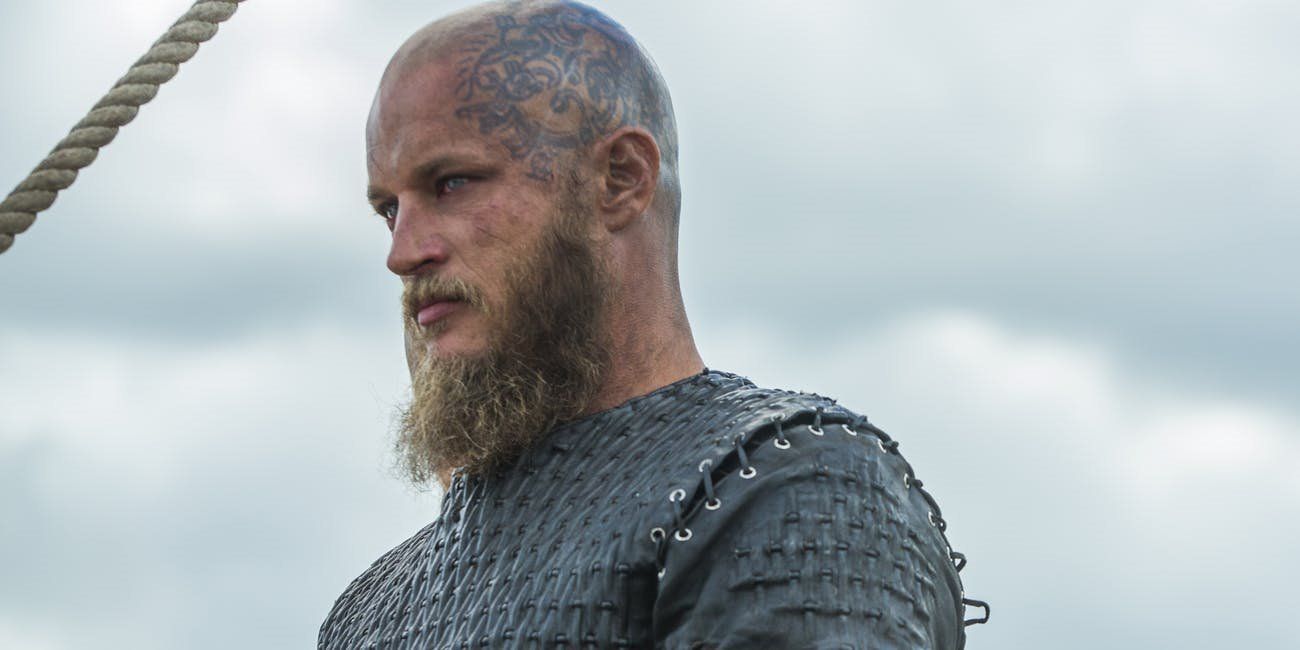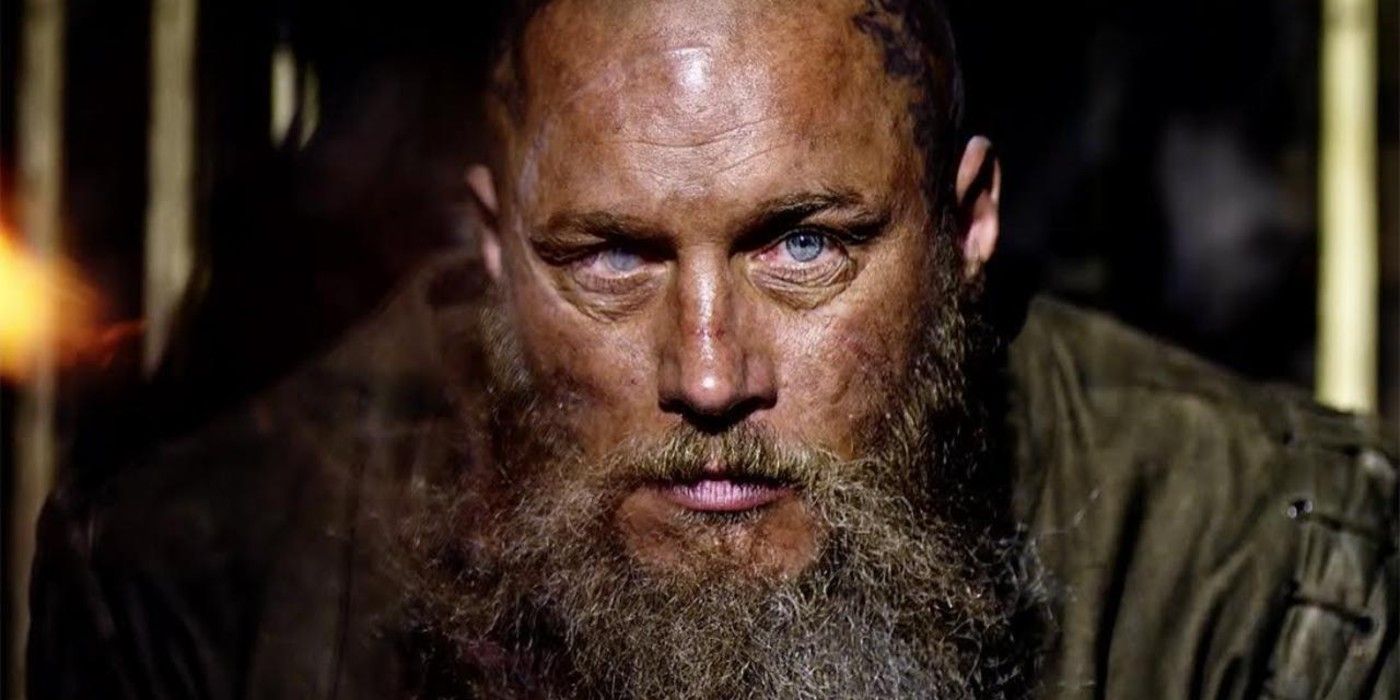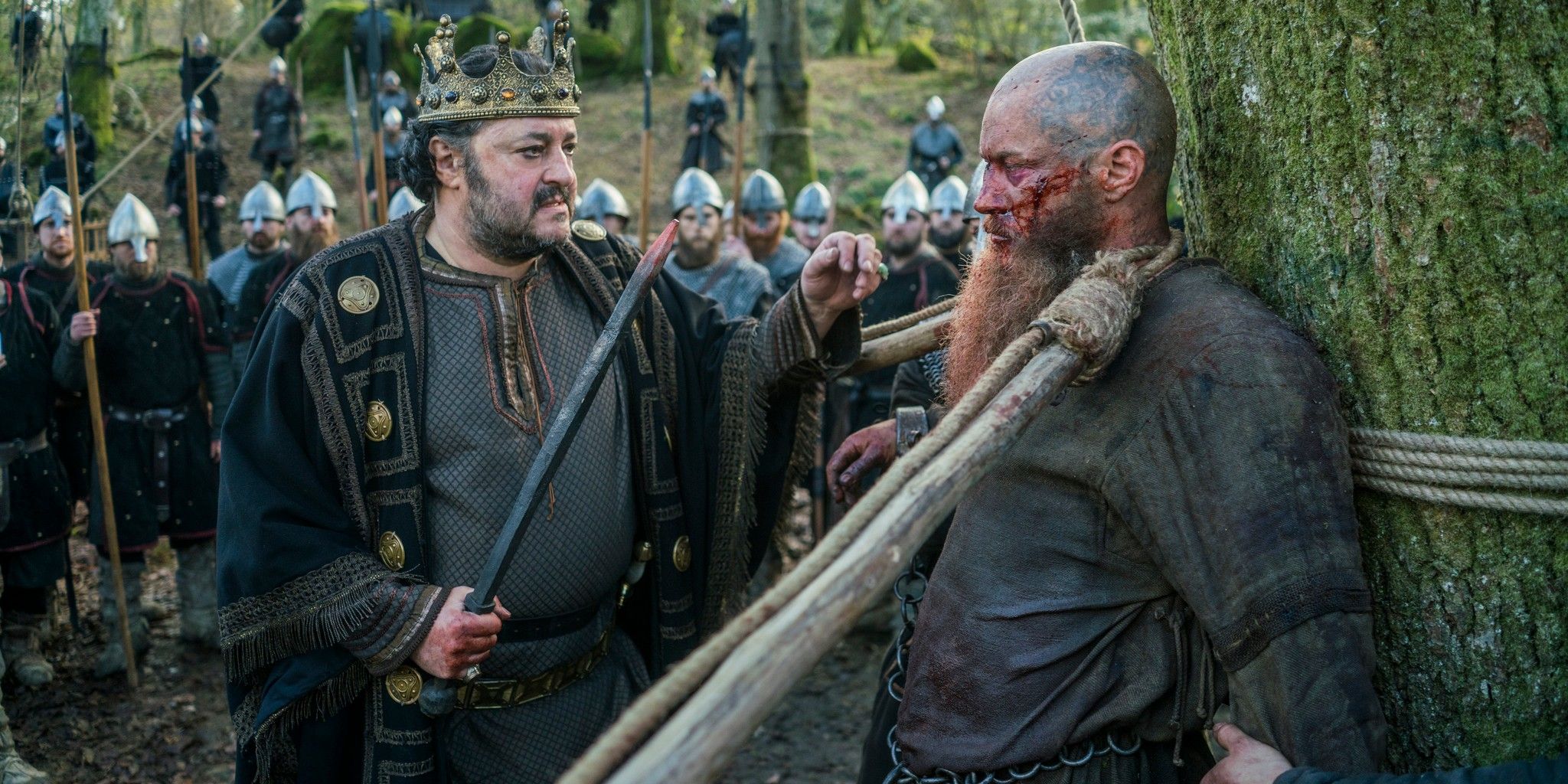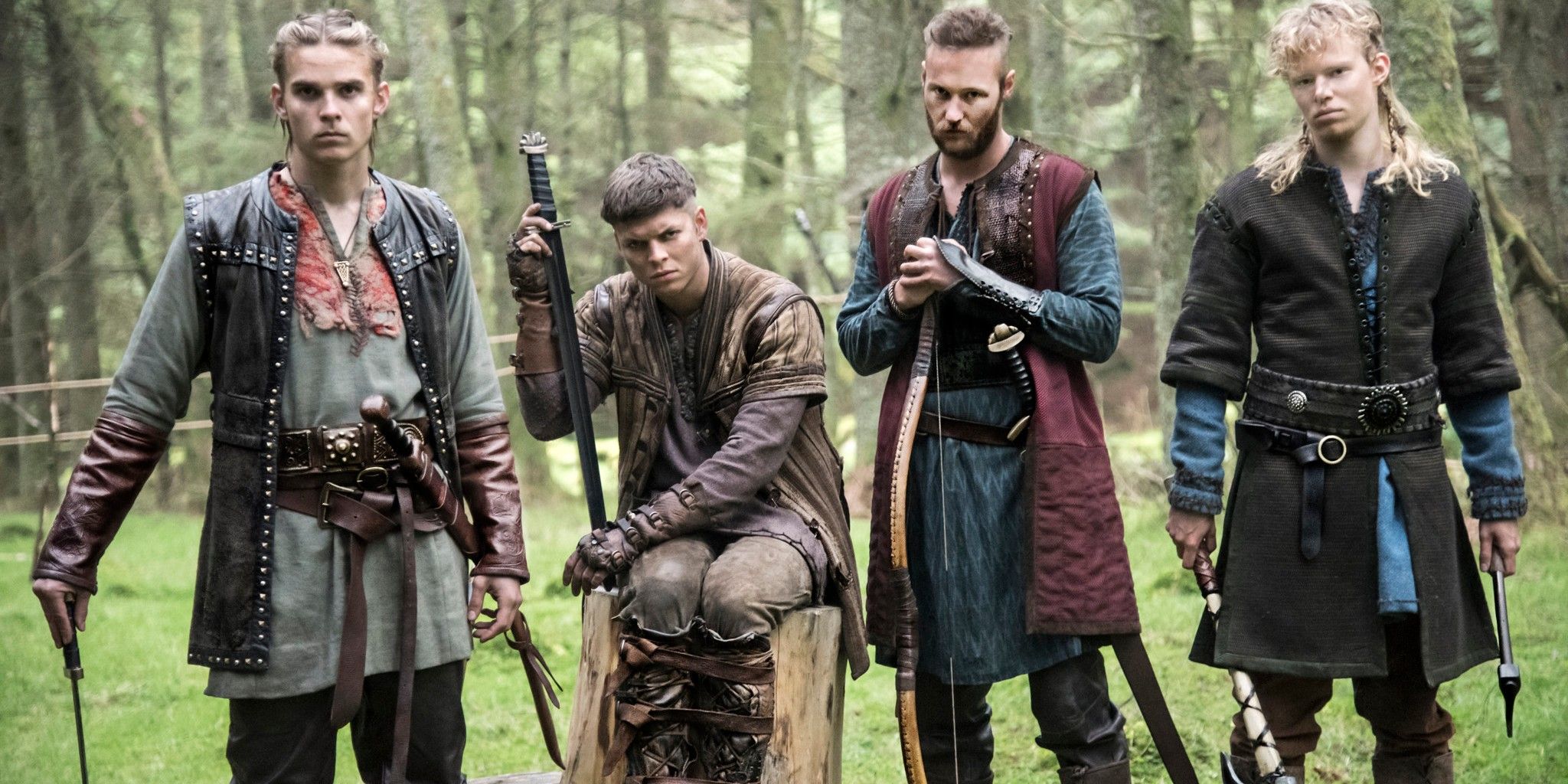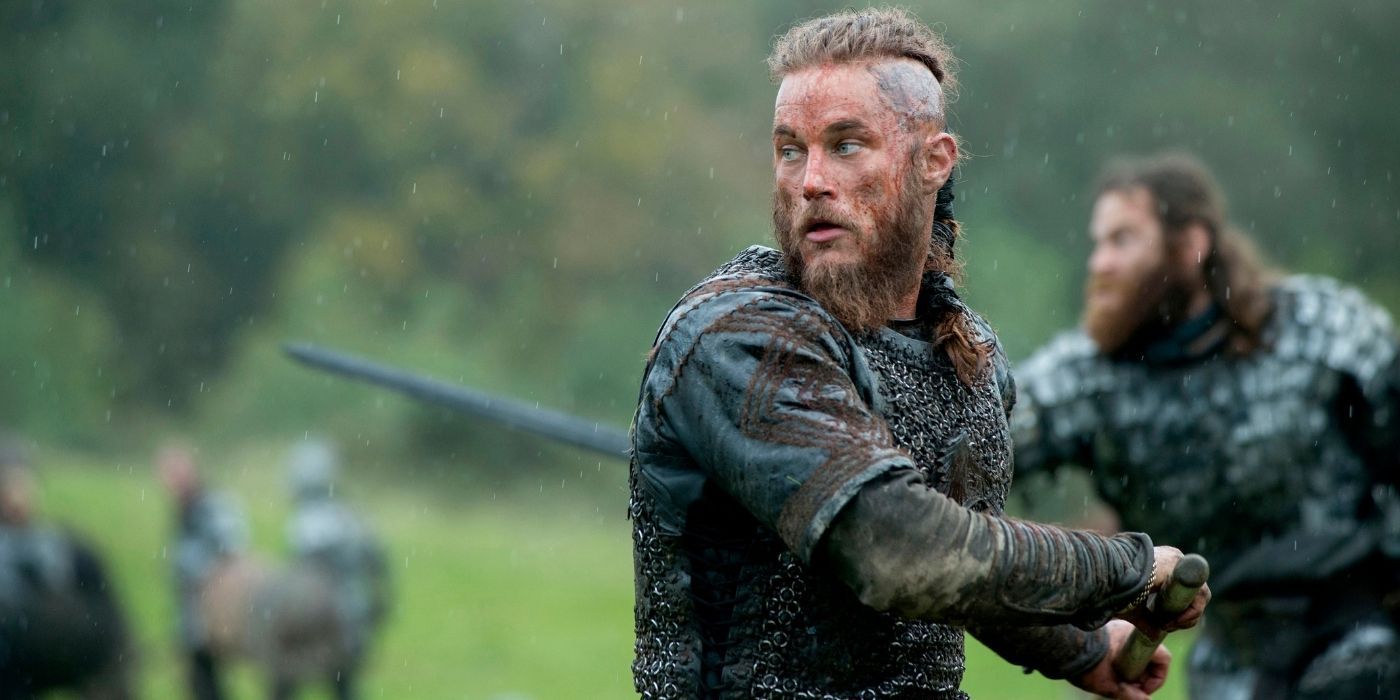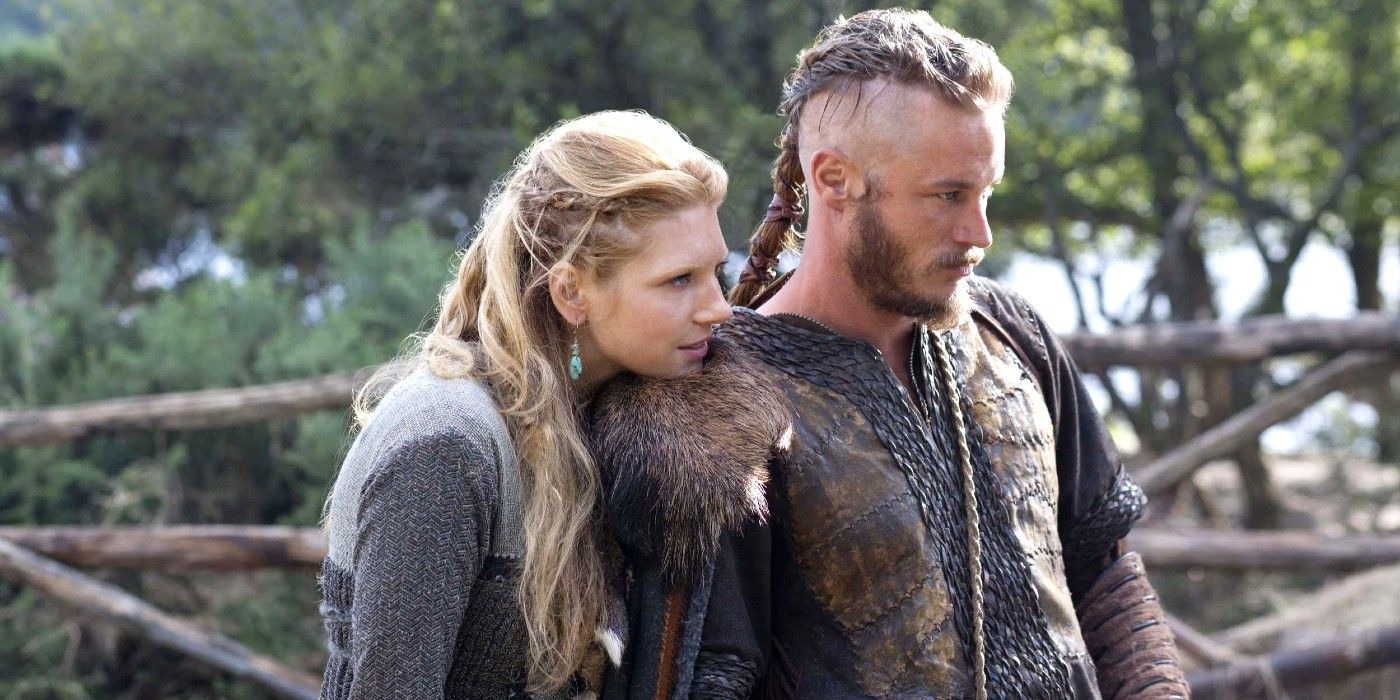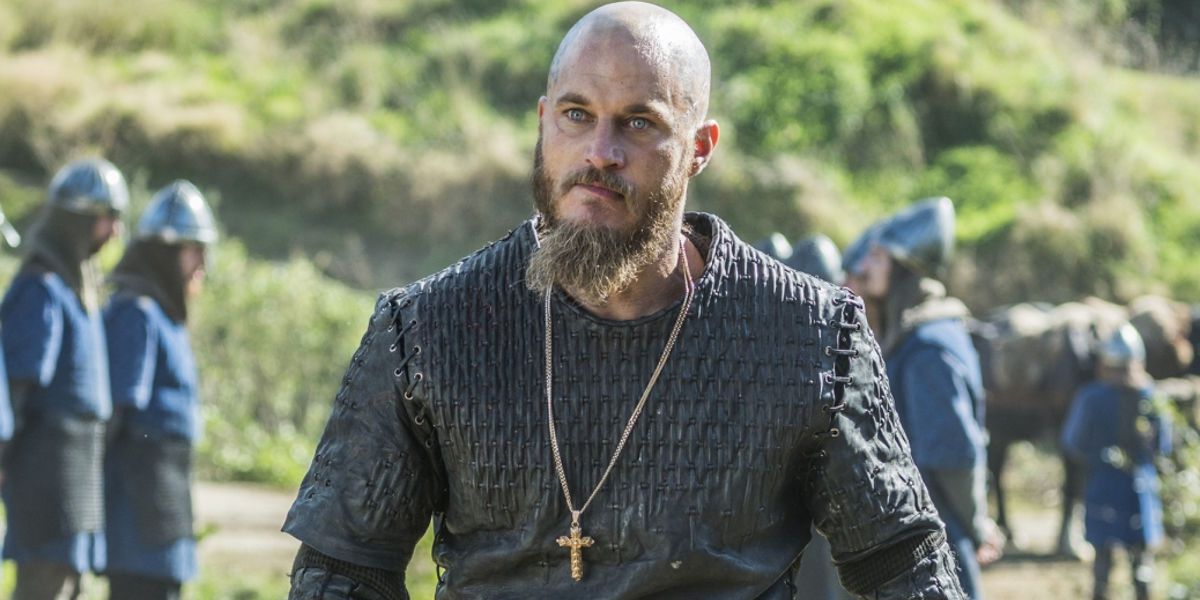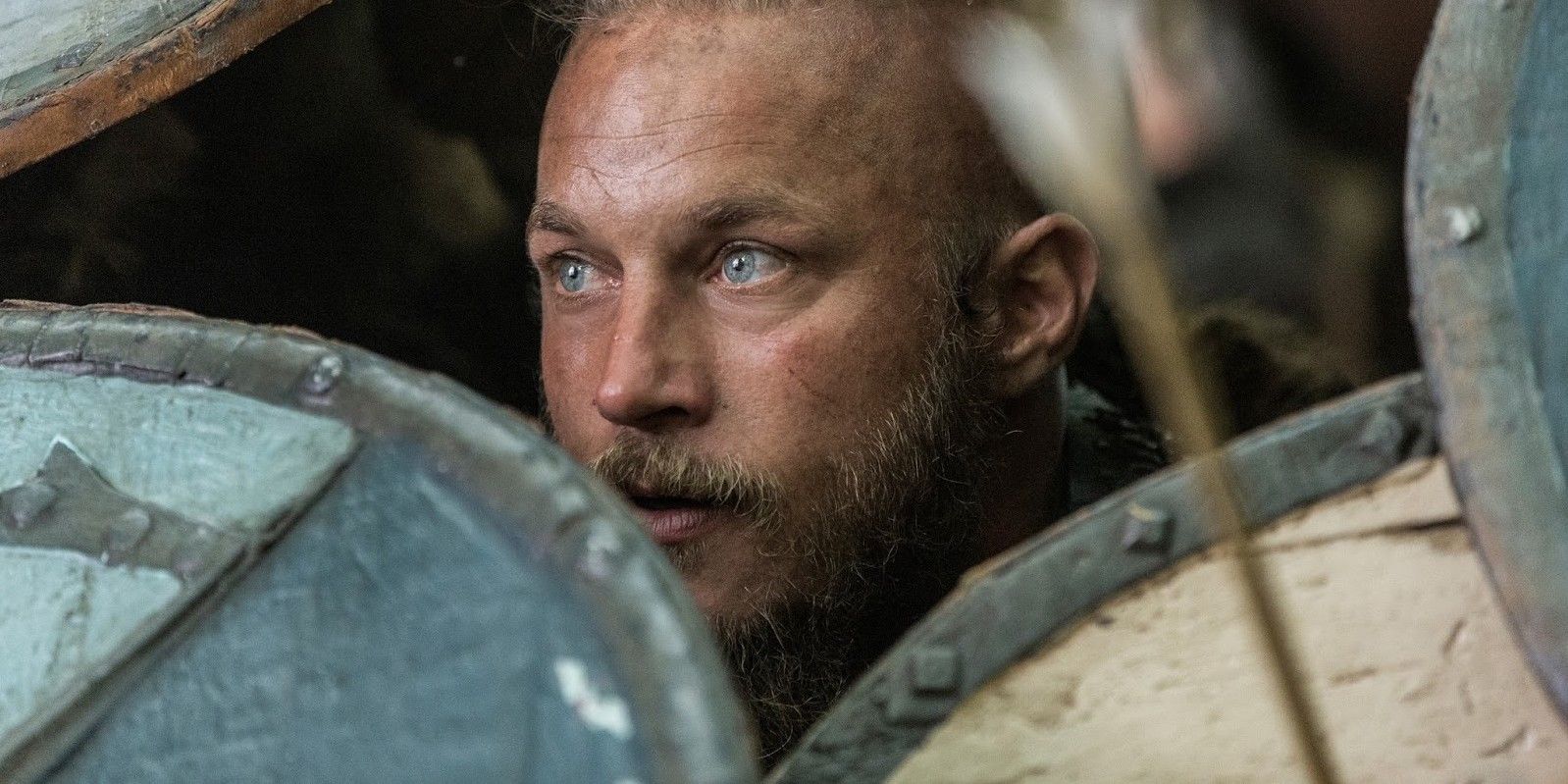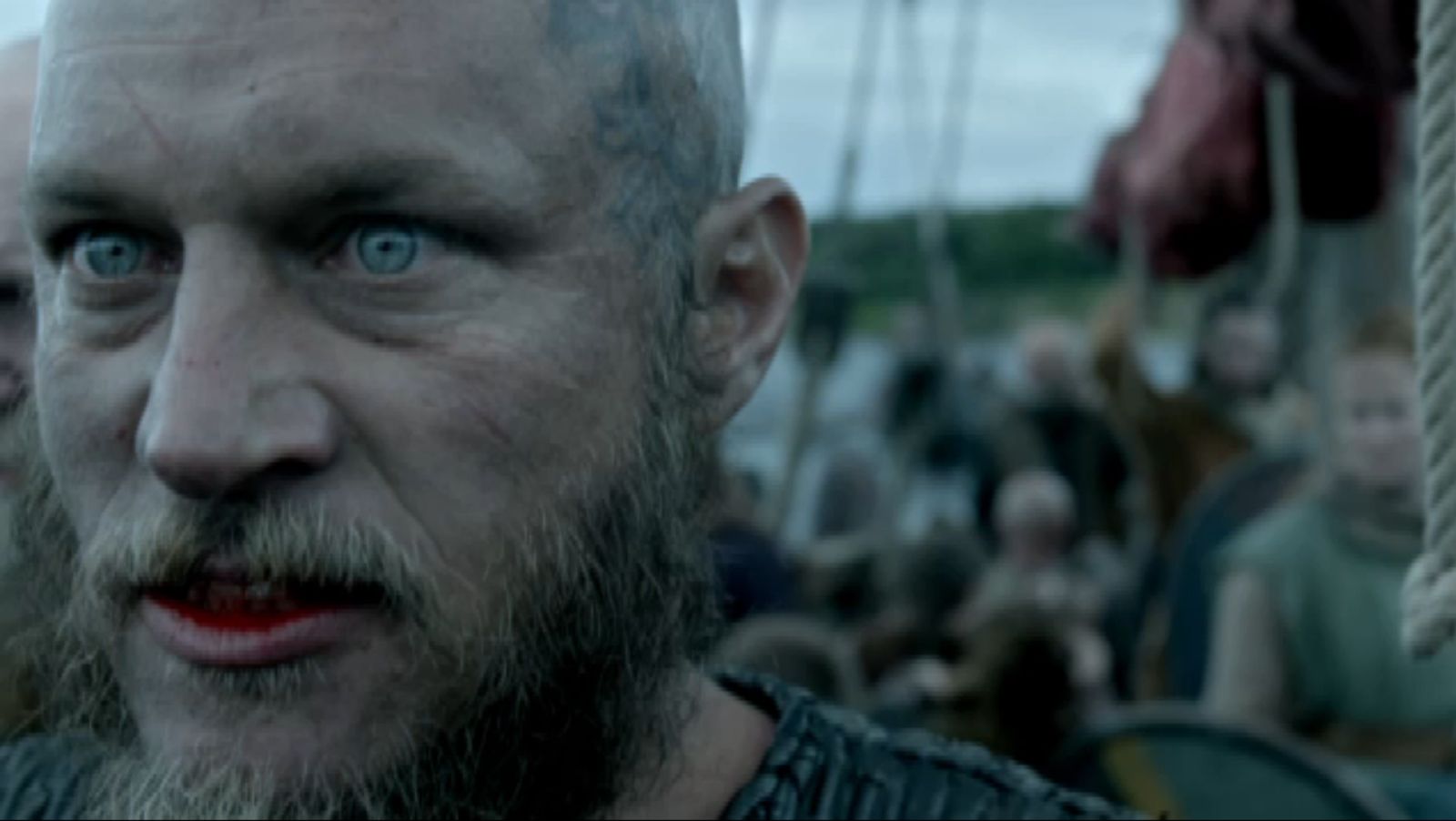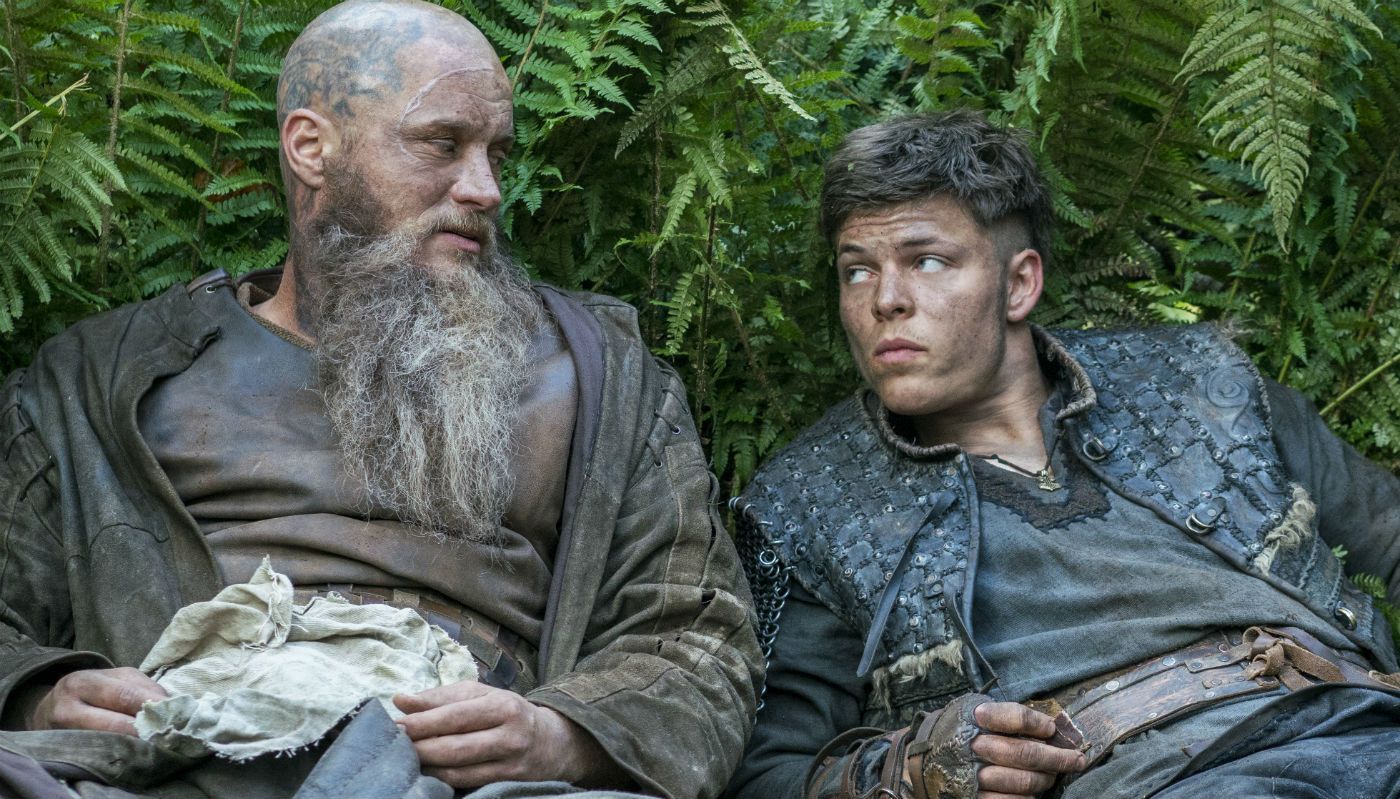Vikings brought the legend of Ragnar Lothbrok to life, and ended his arc with him planning his own death. Here’s Ragnar’s death in Vikings explained.
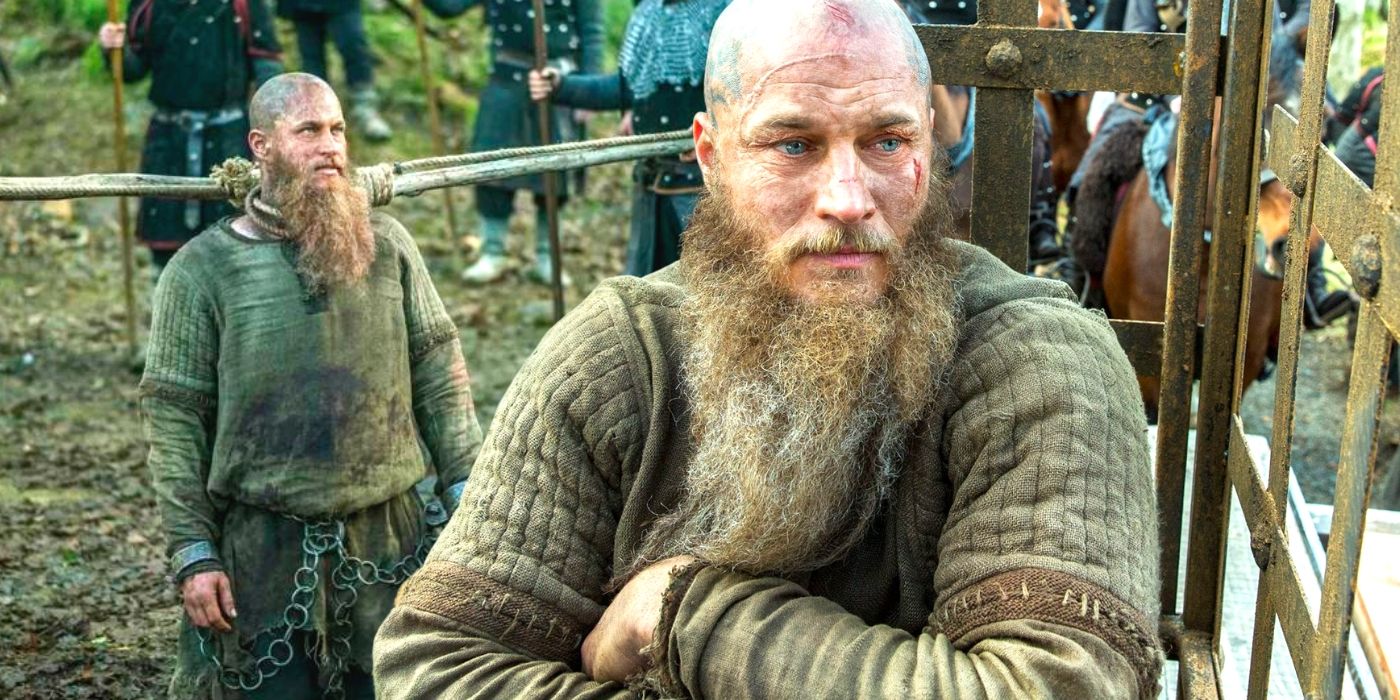
Vikings season 4 featured Ragnar Lothbrok’s death, and the moment it killed off its main character remains one of the show’s most violent and shocking. The Vikings Ragnar death — execution by being dropped into a pit of venomous snakes — was lifted straight from the Viking sagas. Ragnar plotted his own death within the show, which became his greatest victory. Introduced as a farmer in Vikings season 1, Ragnar’s curiosity about the world led him to sail west and lead raids on England, becoming king. Vikings season 4 became Ragnar’s downfall, developing a drug addiction, suffering a devastating defeat during the Second Siege of Paris, and disappearing from Kattegat for many years.
When Ragnar returned to Kattegat he was no longer in any fit state to conquer anything. With a weakened body and a tarnished reputation, he had to resort to digging up his horde of treasure — which he should have been saving for his afterlife in Valhalla — to bribe a crew of raiders to sail with him to England. A storm destroyed his ships, and Ragnar arrived at his destination with no allies except for his disabled son, Ivar the Boneless. He wasn’t much of a threat, but Vikings‘ Ragnar death allowed the character to deal more damage to England than ever before. It was “part of a larger and bolder strategy.”
How Does Ragnar Die In Vikings?
Ragnar Lothbrok Is Thrown In A Pit Full Of Snakes
The Vikings Ragnar death was one of the most shocking moments of season 4 and the show in general, given that Ragnar was the series’ main protagonist up until that point. Because of his penchant for battles and conquering, it was likely only a matter of time before Ragnar Lothbrok’s death, but the shock factor swoops in thanks to the intentional element of Ragnar’s death and the gruesome manner of his passing.
After Rollo betrayed Ragnar by staying in Paris, Ragnar raided Francia as a way to exact revenge on his brother but was soundly and humiliatingly defeated. Upon his return to Scandinavia, Ragnar then left his native Kattegat to live in isolation because of this embarrassment. This period, which lasted for several years, left Ragnar undeniably changed, and he emerged weakened and resentful that his golden era seemed to be passed. Confronted with the prospect of a life in decline, Ragnar decided instead to chart a course to ruin, resulting in his demise.
Ragnar journeyed to England once more and surrendered himself to King Ecbert at Wessex, who in turn gave him as a prisoner to King Ælle. Ælle tortured Ragnar for days on end (though the latter remained stoically unfazed) and finally killed him by throwing him into a pit of venomous snakes. This is only one of several tales about the real-life Ragnar Lothbrok’s death, but it’s certainly one of the most visceral. The violent and unexpected nature of Vikings‘ Ragnar death is one of the reasons it shocked audiences, but it was an even more intriguing moment because of how intentionally Ragnar had planned the whole affair out beforehand.
Ragnar Became An Atheist Before His Death
The Only Person Ragnar Believed In Was Himself
One of the keys to understanding the Vikings Ragnar death is the fact that Ragnar was on very rocky religious footing by the time he died in season 4. Ragnar’s curious mind led him to question everything — including the gods themselves. The conflict between the Norse pantheon and Christianity had been a key theme of Vikings from the start, embodied by the relationship between Ragnar and his beloved friend, Athelstan. The two characters responded very differently to the clash of religions in their lives.
Athelstan found himself torn between his Christian upbringing and his years as a monk, and his kinship with the Vikings and their gods after he was captured. He was never able to fully choose between the Norse faith and Christianity until shortly before Ragnar Lothbrok’s death when he was born again as a Christian. Conversely, the more Ragnar was exposed to Athelstan’s religion, the more he seemed to doubt whether the gods existed at all. However, he recognized that the gods — real or not — had power over people, and began using that to his advantage.
During the First Siege of Paris, in Vikings season 3, Ragnar pretended to have converted to Christianity and asked to be baptized. He then faked his death so that his casket would be carried into the heart of the city for a Christian burial, before dramatically breaking out and opening the gates of Paris for his army to wreak havoc. In the wake of Athelstan’s death, Ragnar had replaced his faith in the gods with faith in himself.
While recovering from the injuries he received in Paris, Ragnar had a vision of the gates of Valhalla closing to him. While this could be interpreted as meaning that he was simply not ready to die yet, it could also be seen as the moment Ragnar ceased to believe in Valhalla. In Vikings season 4, Ragnar made his loss of faith clear when he accused Kattegat’s Seer’s prophecies of being vague, confusing, and self-fulfilling. Ragnar told the Seer, “I don’t believe in the gods’ existence. Man is the master of his own fate, not the gods. The gods are man’s creation, to give answers that they are too afraid to give themselves.”
At the end of his life, Ragnar was no longer willing to accept that the gods had already decided the manner of his death. Instead, he proudly proclaimed that he shaped his own destiny and that he alone plotted the course of his death.
Ragnar Was Ready To Die (And Had Been For A While)
Unlike The Viewers, Ragnar Wasn’t Shocked By His Death
From the moment he returned to Kattegat after Vikings‘ season 4 time jump, it was clear that Ragnar Lothbrok was contemplating his mortality. He later confessed to King Ecbert that “death has been uppermost on my mind for some time.” First Ragnar challenged his sons to kill him and become king if they dared, which they did not. Then he hung himself from a tree, in an homage to the myth of Odin hanging himself from the tree Yggdrasil (the parallel to the one-eyed Allfather returns in Ragnar Lothbrok’s death scene, when one of his eyes is swollen shut from a beating).
When the rope eventually snapped and spared his life, Vikings‘ Ragnar Lothbrok sought his death another way — by returning to England. He formed a plan to set up his enemies for defeat, and his sons for victory and fame. It was clear that he had no intention of ever returning since he took the time to say goodbye to all of his loved ones before he left, which included making peace with Floki.
Why Ragnar Wanted To Be Executed By King Ælle
Ragnar Lothbrok Used His Death To Benefit The Vikings
The basic goal of Ragnar Lothbrok’s death was to set up the destruction of both King Ecbert and King Ælle. There had never been any love lost between Ragnar and Ælle, but similar personalities and shared love for Athelstan meant that Ragnar and Ecbert had a great deal of respect for each other. Despite this, Vikings‘ Ragnar Lothbrok couldn’t die without planning revenge for the slaughter of the Viking settlement many years before. He tricked Ecbert into believing this crime was forgiven so that Ecbert would hand him over to Ælle and let Ivar go free, but in fact told Ivar to take revenge on them both.
There was more to Ragnar Lothbrok’s death than simple revenge, however. In Vikings season 2, he asked the Seer what would become of his sons, and was told that they would become more famous than him. In particular, Ragnar saw the potential for greatness in Ivar, telling his youngest son that his non-functioning legs had given him a strength that his brothers lacked. The nature of Ragnar Lothbrok’s death was also his final lesson for Ivar the Boneless: he emphasized that people would always underestimate him because of his legs, just like Ragnar’s own enemies underestimated him when he appeared to be nothing more than a weak old man in rags.
Believing that he had chosen his own fate, Ragnar decided to guide the fate of his sons as well. In giving them the motivation of avenging his death, he also gave them the rallying cry that they would need to raise the great heathen army. In life, Ragnar had to spend every last scrap of gold he had just to put together a pathetic raiding crew; but in death, Ragnar Lothbrok became a Viking legend that could unite the people of the North and put his sons on the path to glory. His legacy is still a part of Vikings: Valhalla.
How Ragnar’s Plan Played Out After His Death
Ragnar’s Death Didn’t Usher In The Era Of Prosperity He’d Hoped For
Despite his legendary status and his accomplishments as an explorer, Ragnar’s military victories were actually somewhat limited. He led surprise raids on Northumbria that were successful, but when he led an army to Wessex for the first time, they were defeated by King Ecbert’s use of Roman military tactics. He suffered another brutal and costly defeat during the initial battle of the First Siege of Paris and was defeated twice during the Second Siege of Paris, returning home a broken man.
Although he made little headway in conquering England during his life, Ragnar Lothbrok’s death in season 4 wreaked havoc on the country as his sons — Bjorn, Ubbe, Hvitserk, Sigurd, and Ivar — waged war with an assembled army of thousands. Ivar in particular proved to be a far better military strategist than his father. Bjorn led the initial victory against King Ælle with sheer brute force.
However, Ivar used cunning to confuse King Ecbert’s army and draw them into a chokehold, forcing Ecbert’s family to flee and abandon him to his fate. Ælle was gruesomely killed when Bjorn performed the blood eagle ritual upon him, while Ecbert was permitted the more peaceful death of cutting his own wrists. After exacting Ragnar’s revenge, his sons were able to conquer the city of York, establishing a stronghold there and using Ivar’s strategies to repel Saxon attempts to reclaim it.
It was said many times in the Vikings show that Ragnar’s real dream wasn’t simply to raid England but to establish land for his people there. Through the careful design of his own death, he was finally able to succeed in this goal. Regardless of whether or not Valhalla exists, and whether Ragnar went there, he lived on after death by building a legacy through his sons. Of course, that legacy got a bit off-track in Vikings season 5 when his sons started fighting among themselves, but Ragnar can’t really be blamed for that.
How Ragnar Lothbrok Died In Real Life
Historians Can’t Agree If Ragnar Lothbrok Even Existed
The famous Norse king Ragnar Lothbrok, who inspired the Vikings TV show, has been immortalized in Icelandic legends that recount his victories before eventually being defeated by King Ælle and thrown into a pit of snakes, just like in Ragnar Lothbrok’s death scene. Sadly, little proof exists that the Vikings‘ Ragnar was actually a real person. Although evidence supports the existence of his sons, most notably Ivar the Boneless, historians believe that Ragnar was actually a combination of 3 different historical figures: King Horik I of Denmark (who appeared in the Vikings series), King Reginfrid, and Reginherus.
The real King Horik was eventually killed by his brother, Guttorm, and King Reginfrid likely died in combat. Little is known about Reginherus’ end, but many believe he was simply killed after losing in battle. None of these deaths are nearly as iconic as the myths surrounding Ragnar’s, so it makes sense that Vikings season 4 sought to portray the legend rather than reality.
Killing Off Ragnar Was Hard For Vikings Showrunner Michael Hirst
Ragnar’s Death Wasn’t An Easy Decision
Fans of the series weren’t the only ones heartbroken to see Ragnar’s death in Vikings. Showrunner Michael Hirst has written every episode of Vikings. However, despite knowing the plot in advance, he was still shaken by Ragnar’s emotional death, as the Viking was one of Hirst’s favorite characters (via Express). The showrunner even gave credit to Fimmel for the sequence, explaining, “When I saw it I wept, knowing that this was the end of a journey that Ragnar and I and Travis and I had been on. It was a creation of both me and Travis together. It was a very moving day.”
The strong reaction Hirst has was shared by every viewer, but the writer and historian at least feels like it was a pay-off despite seeing such a strong presence in the show disappear. Hirst added, “It carries a huge charge in the show, it really does pay off all the hours we’ve invested in him. We do death very well in Vikings, but this was particularly moving.” Vikings doesn’t shy away from killing off characters, and sometimes in the most physically painful ways, but seeing Ragnar’s death in Vikings was more emotionally painful than anything.
What Has Travis Fimmel Done Since Playing Ragnar Lothbrok?
The Actor Has Done A Great Deal Outside Vikings
Before Ragnar Lothbrok’s death, actor Travis Fimmel had an illustrious career preceding Vikings — but the History Channel historical epic is definitely what put him on the map. Following Vikings, Travis Fimmel took on the role of Caleb/Marcus in the Ridley Scott sci-fi series Raised by Wolves, where he fought for the atheist side during the war against the Mithraic cult before taking on the identity of one of the high-ranking Mithraic.
After the show was canceled, he played Anderson on the series Dirty Black Bag. Travis Fimmel has been on the big screen as well, playing Anduin Lothar in the film based on the popular video game Warcraft. He’s had various other appearances in movies, and his most recent endeavor will see the actor playing the part of Fenton “Preacher” Lang in the upcoming western movie Rust. Since his death on Vikings, Travis Fimmel has gone on to have a solid acting career, also featuring in Charlie Day’s directorial debut, Fool’s Paradise, and he will play Desmond Hart in the upcoming HBO series Dune: The Sisterhood too.
